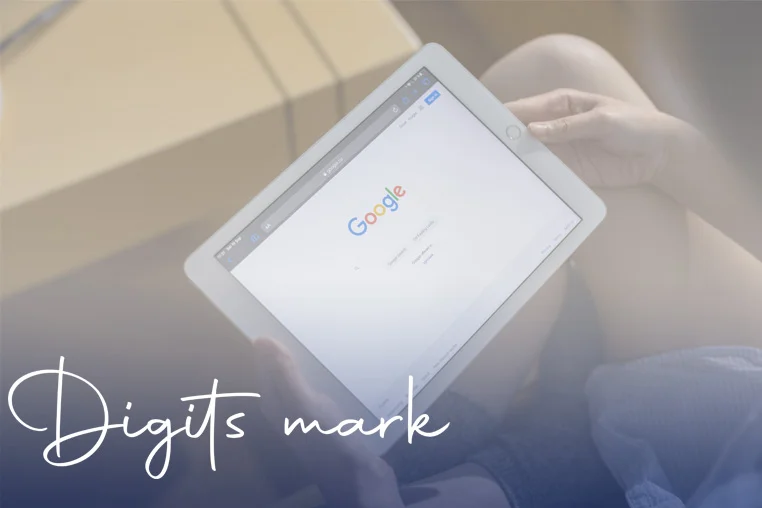Introduction
Digital marketing continues to grow in importance. People are spending more time online, and marketing budgets continue to shift toward digital. With so many opportunities in digital marketing, it is easy to get into execution mode and just start doing. However, investing in your strategy is one of the best ways to grow your digital return on investment. A clear strategy reduces waste, adds focus to your efforts and builds on what is already working.
Here's how to create a solid digital marketing strategy:
Content table
- Introduction
- The 6 Pillars of Online Marketing
- How to Create a Digital Marketing Strategy in 10 Steps
The 6 Pillars of Online Marketing
The world of online marketing has grown, and today there’s clearly more than one way to market your website on the internet.
The good news is that though these areas are separate marketing categories, they can all work together to achieve your goals and grow your business.
Online marketing can be categorized in 6 main disciplines:
- Content marketing – The creation and publication of useful content designed to attract, educate, and maintain your target audience.
- Native advertising – Also called advertorials, native advertising is a type of online advertisement that resembles the editorial content of the website or publication they’re promoting.
- Pay-per-click (PPC) advertising – PPC is a marketing strategy that involves online ads. Advertisers pay each time a user clicks on one of their ads.
- Search engine optimization (SEO) – This is the practice of improving a website so that it becomes search engine friendly and brings organic traffic to the website.
- Social media marketing – The practice of promoting a product or service on social media platforms. This is typically done through a social media management platform.
- Email marketing – A marketing approach that uses email as a way of marketing to and nurturing potential and existing clients.
How to Create a Digital Marketing Strategy in 10 Steps
Now that you know a little about the different types of online marketing tactics, it’s time to learn the basics on creating the strategy.
From personas to the right tools, there are plenty of big and little things that can help or hinder your digital marketing strategy’s success. Here’s the foundational work you need to make sure your strategy works well, including our favorite tools and software.
Step 1: Create a Customer Persona
Previously, digital marketers collected qualitative and quantitative information about the target audience that included age, gender, occupation, interests, and location. The definition of the potential customer has been taken to another level recently, with buyer personas taking over. Now, the most effective marketing strategies are incomplete without them.
Buyer personas are a term used to describe the ideal customer that can be defined by surveying and contacting the pre-defined target group. To define your own buyer persona, you can make use of online tools like MakeMyPersona and Persona Creator.
Step 2: Identify Your Goals and Tools
Every professional marketer knows how important this stage is. Without goals, the strategy simply will not work, so defining them is your main task. Make sure that the goals you developed are suitable, and make them measurable.
Example of a weak marketing goal:
Increase the conversions on the website next year and create two promotional offers.
What is wrong with this goal? Right, it is non-measurable! How one can measure the progress using this goal?
Here is how it should have been formulated:
Increase the conversions on the website by 20 percent in the first quarter of 2020, and create two promotional offers: free marketing report and a marketing book. Have them online by February and March respectively.
There, measuring the progress becomes possible now.
Step 3: Focus on Blogging
Creating high-quality content is important for any digital marketing strategy. Blogging is one way to create quality content for a site and expand your content marketing strategy. This key aspect of the strategy performs some critical functions, including bringing more traffic to your website, reinforcing social media presence, positioning against other companies, and ranking all those long-tail search queries and keywords.
If you have a regularly updated blog that the visitors find useful, it means that your website will be easily found through the search engines and can be used as a platform for your marketing campaign. If you don't have capacity to tackle blogs in-house you can looking into blog writing services for support.
Step 4: Evaluate Existing Digital Marketing Channels
Analyze the digital assets and channels that you are already using, including website, blog content, social media account, word-of-mouth, native advertising, Google Adwords, paid advertising, and so on. Ask yourself: how effective were they and how can they be used next year?
It is okay if your future digital marketing strategy process does not incorporate all of these elements, but it sure should use those that were the most effective in the previous year. For example, if a landing page you recently created has been effective in generating leads, use it again but improve it as much as possible. The same applies to other assets and channels.
Step 5: Automate Marketing
Marketing automation is huge, and it’s only getting better with new technology and software. Today’s leading marketing automation platforms can do wonders for your digital marketing strategy, making it easy for you to automate activities such as content marketing, email marketing, lead generation, and more. Plus, it’s easy to find marketing automation platforms that are integrated with your company’s sales CRM, which improves the entire sales process.
If your company is still not on board with automated lead generation, make sure you add it to your strategy this year.
Step 6: Nail Mobile Optimization
It’s a mobile-first era, and there’s no excuse for not improving your site for a wonderful mobile experience. Mobile optimization includes page speed, site design, and various other search engine optimization practices to ensure that people who come to your site using a mobile device have a good experience.
Review your mobile responsive design and email templates to ensure that you are using the latest methods and provide only relevant and latest data.
Step 7: Make it Easy for Customers to Reach You
Online business is all about connecting with potential customers, so traffic on your website should be high to ensure positive outcomes. Your digital marketing strategy therefore should ensure that your leads and visitors are not exerting unnecessary effort to connect with you. Engaging with your customers is invaluable for your business.
“There’s a lot to be learned from your audience online. You’ll get honest feedback on campaigns and messaging, for one. Incorporating your fans’ interpretation and opinion of your brand can get you both fresh content and loyal fans." –Adam Fridman
To eliminate the unnecessary effort, you should ensure that landing pages do not ask for irrelevant data. Make call-to-actions clearly visible on the landing page and other pages on the website. You can also use tools like Target Everyone and Zenreach to make customer communication easier than ever.
Step 8: Use the Right Technology
A marketing effort is wasted if an ineffective or inappropriate technology is used.
For a proper digital marketing strategy, you’ll need tools such as marketing automation software as well as industry tools such as the Snapshot Report by Vendasta. There are tools that can help you during every stage of the digital marketing process, including tools that help you identify your goals to tools that help you track where your visitors are coming from.
Step 9: Confirm Your Differentiators
If your company is not different from your competitors, you should not expect high profits. Make sure you change (or reinforce) your difference from the others by talking to your customers and asking them why they selected your company. Every company has a unique selling proposition, an attribute that sets you apart from the competition. Do the research and work to find out what that is. Then, fix your existing differentiators if needed. Incorporate this message into your content marketing campaigns.
Step 10: Track Your Process
Constant monitoring should be provided to ensure that the strategy is working effectively. This is done by assigning teams that would deliver this task. Remember to learn from the mistakes and always find improvement opportunities!
There is a lot of work involved in designing a digital marketing strategy process, but an effective and well thought-out plan will make it much easier.
Ready to nail down your digital marketing strategy?
































